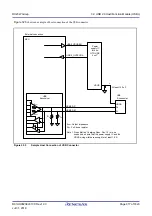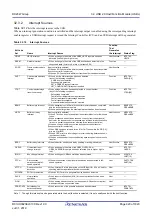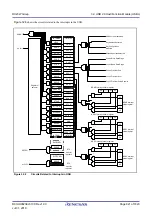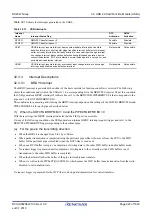
R01UH0823EJ0100 Rev.1.00
Page 930 of 1823
Jul 31, 2019
RX23W Group
32. USB 2.0 Host/Function Module (USBc)
32.3.3.4
Device State Transition Interrupt
is a diagram of device state transitions in the USB. The USB controls device state and generates device
state transition interrupts. However, recovery from the suspended state (resume signal detection) is detected by means of
the resume interrupt. The device state transition interrupts can be enabled or disabled individually using INTENB0. The
device state to which a transition was made can be confirmed using the INTSTS0.DVSQ[2:0] flags.
When a transition is made to the default state, a device state transition interrupt is generated after a USB bus reset is
detected.
Device state can be controlled only when the function controller is selected. The device state transition interrupts can
also be generated only when the function controller is selected.
Figure 32.12
Device State Transitions
USB bus reset detection
(DVST is set to 1)
USB bus reset detection
(DVST is set to 1)
Note:
For the transition indicated in solid line, the DVST bit is set to 1.
For the transition indicated in dashed line, the RESM bit is set to 1.
SetAddress
execution
(Address = 0)
(DVST is set to 1)
SetAddress execution
(DVST is set to 1)
SetConfiguration
execution
(configuration value = 0)
(DVST is set to 1)
SetConfiguration execution
(configuration value
0)
(DVST is set to 1)
Powered
state
(DVSQ = 000b)
Suspended state detection
(DVST is set to 1)
Resume (RESM is set to 1)
Suspended
state
(DVSQ = 100b)
Default
state
(DVSQ = 001b)
Suspended state detection
(DVST is set to 1)
Resume (RESM is set to 1)
Suspended
state
(DVSQ = 101b)
Address
state
(DVSQ = 010b)
Suspended state detection
(DVST is set to 1)
Resume (RESM is set to 1)
Suspended
state
(DVSQ = 110b)
Configured
state
(DVSQ = 011b)
Suspended state detection
(DVST is set to 1)
Resume (RESM is set to 1)
Suspended
state
(DVSQ = 111b)
(Address > 0)
















































